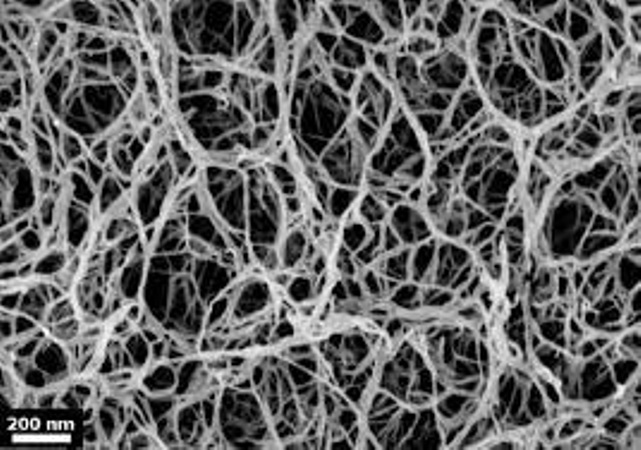
The bio-based construction polymer market is expected to grow at a CAGR of 24% during the forecast period of 2024 to 2032, bio-based construction polymer market is a dynamic sector within the construction industry, driving sustainable and eco-friendly solutions for building materials and infrastructure development. Bio-based construction polymers are derived from renewable sources, making them a viable alternative to traditional petroleum-based polymers. These polymers offer improved environmental performance, reduced carbon footprint, and increased durability, making them increasingly attractive for various construction applications.

Sustainability and Environmental Concerns
The heightened awareness of environmental issues and the need for sustainable construction practices are significant drivers for the Bio-Based Construction Polymer Market. With increasing emphasis on reducing greenhouse gas emissions and conserving natural resources, the demand for bio-based polymers has surged. Governments, regulatory bodies, and industry stakeholders are actively promoting the use of environmentally friendly materials, contributing to the growth of bio-based construction polymers.
Advancements in Material Science
Rapid advancements in material science have enabled the development of bio-based polymers with enhanced properties. These polymers offer comparable or even superior performance to traditional petroleum-based polymers, leading to their increased adoption in construction applications. Manufacturers are investing in research and development to improve the mechanical strength, thermal stability, and overall performance of bio-based construction polymers, thereby driving market growth.
Government Initiatives and Incentives
Many governments around the world are introducing policies and incentives to encourage the adoption of bio-based materials in construction. Subsidies, tax benefits, and grants provided to builders and manufacturers using sustainable materials have spurred the demand for bio-based construction polymers. Such initiatives are aimed at fostering a circular economy and reducing the industry's environmental impact.
Higher Upfront Cost
A key restraint in the Bio-Based Construction Polymer Market is the higher upfront cost compared to traditional petroleum-based polymers. While the long-term benefits of using bio-based polymers are evident in terms of environmental sustainability and reduced life-cycle costs, the initial investment required can deter some construction companies from adopting these materials. Addressing this cost challenge and demonstrating the long-term economic advantages of bio-based polymers is crucial for wider market penetration.
Epoxies Dominate the Market by Product
The Bio-Based Construction Polymer Market is segmented by product type, including Cellulose Acetate, Epoxies, PET, PUR, and Others. In 2023, Epoxies dominated the market in terms of revenue due to their widespread applications in adhesives, coatings, and structural materials. However, during the forecast period of 2024 to 2032, Cellulose Acetate is projected to exhibit the highest CAGR. The growing emphasis on sustainable construction and the material's biodegradability contribute to this growth.
Insulation Applications Dominate the Market by Application
The market is further segmented by application type, including Pipe, Profile, Insulation, and Others. Insulation applications accounted for the highest revenue in 2023, driven by the need for energy-efficient building solutions. Over the forecast period, the Profile segment is anticipated to achieve the highest CAGR, supported by its use in a range of structural and aesthetic applications in construction.
North America Remains as the Global Leader
North America led the Bio-Based Construction Polymer Market in 2023, attributed to the region's focus on sustainable construction practices, stringent environmental regulations, and strong research and development activities. However, the Asia-Pacific region is expected to exhibit the highest CAGR during the forecast period. Rapid urbanization, infrastructure development, and increasing government initiatives to promote sustainable construction drive the market's growth in this region.
Collaborations to Enhance Market Shares Among Key Competitors
Prominent players in the Bio-Based Construction Polymer Market include NatureWorks LLC, Arkema SA, BASF SE, Braskem SA, Corbion NV., Avient,Bio-on SpA, DuPont, Evonik Industries AG, Kaneka Corporation, Kuraray Co., LTD., Mitsubishi Chemical Corporation, Mitsui Chemicals Inc., Solvay, and Toyobo Co. Ltd. These companies are actively investing in research and development to enhance the properties of bio-based polymers and expand their application in construction. Key strategies involve collaborations with research institutions, partnerships with construction companies, and innovations in manufacturing processes to achieve cost efficiencies. The market is characterized by a focus on creating a circular economy and reducing the environmental impact of construction materials.
Historical & Forecast Period
This study report represents analysis of each segment from 2022 to 2032 considering 2023 as the base year. Compounded Annual Growth Rate (CAGR) for each of the respective segments estimated for the forecast period of 2024 to 2032.
The current report comprises of quantitative market estimations for each micro market for every geographical region and qualitative market analysis such as micro and macro environment analysis, market trends, competitive intelligence, segment analysis, porters five force model, top winning strategies, top investment markets, emerging trends and technological analysis, case studies, strategic conclusions and recommendations and other key market insights.
Research Methodology
The complete research study was conducted in three phases, namely: secondary research, primary research, and expert panel review. key data point that enables the estimation of Bio-Based Construction Polymer market are as follows:
Market forecast was performed through proprietary software that analyzes various qualitative and quantitative factors. Growth rate and CAGR were estimated through intensive secondary and primary research. Data triangulation across various data points provides accuracy across various analyzed market segments in the report. Application of both top down and bottom-up approach for validation of market estimation assures logical, methodical and mathematical consistency of the quantitative data.
| ATTRIBUTE | DETAILS |
|---|---|
| Research Period | 2022-2032 |
| Base Year | 2023 |
| Forecast Period | 2024-2032 |
| Historical Year | 2022 |
| Unit | USD Million |
| Segmentation | |
Product
| |
Application
| |
|
Region Segment (2022-2032; US$ Million)
|
Key questions answered in this report